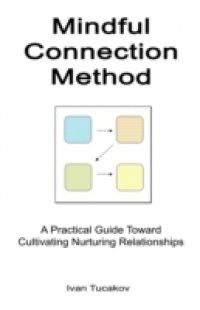In Chapter I, The book explores two fields one can focus in order to cultivate Mindful Connection:- Empathy Filed involves any action that one takes toward creating empathy and focusing on what is emotionally going on for him/herself or another person. The basic purpose of the Empathy Field is to identify met and unmet needs by attuning to all the feelings (both joyous and non-joyous). - Resolution Field is about any action that takes a person toward focusing on rational thinking, logical inference and taking conscious, responsible and real action. It is about focusing on what can be done about a situation and acting on it. The basic purpose of the Resolution Field is to maintain the met needs identified in the Empathy Field and to aim toward getting the identified unmet needs met. Doing this sustains the joyous feelings, resolves one's non-joyous feelings, builds resilience and creates wellbeing. Each person that one connects to (including him/herself) has Empathy and Resolution Field to focus on. This creates four different Fields one can Focus on at a given time. Resolution FieldThoughtsEmpathy FieldEmotionsYou Another PersonThe book is supported by an illustrated example of a teacher and four students who react to his loud voice during a class. What all these students have in common is that each of their ways of acting and reacting complete the full picture toward building Mindful Connections. There is a time and place for each one. The reader learns through them. #1 - Freddie Feels focuses on the first Field: "Empathy Field for Yourself" In Chapter II, he takes four steps: he creates supportive space for himself by first initiating it (step 1) and then finding it (step 2). Once he is in the supportive space, he empathically connects with himself by attuning to his feelings (step 3) and identifying his needs (step 4). #2 - Sadie Solves focuses on the second Field: "Resolution Field for Yourself" In Chapter III, she takes four steps: she explores opportunities by observing behaviors (step 1) and then creating strategies (step 2). Next, she carries out her strategies by requesting new behavior from the teacher (step 3) and also changing her own behavior (step 4). #3 - Lisa Listens focuses on the third Field: "Empathy Field for Another Person" In Chapter IV, she takes four steps: she supports the teacher to create supportive space for himself by first initiating it (step 1) and then finding it (step 2). Once he is in the supportive space, she empathizes with the teacher to support him in empathically connecting with himself by attuning to his feelings (step 3) and identifying his needs (step 4). #4 - Andy Advises focuses on the fourth Field: "Resolution Field for Another Person" In Chapter V, he takes four steps: he supports the teacher in exploring opportunities by observing his behaviors (step 1) and then creating strategies (step 2). Next, he supports the teacher in carrying out his strategies by requesting new behavior from the students (step 3) and also changing his own behavior (step 4). With a full Practice Section at the back, this book offers guidance in areas of personal growth, family dynamics, work settings, conflict resolution, counseling, education, community building, social issues and beyond.

